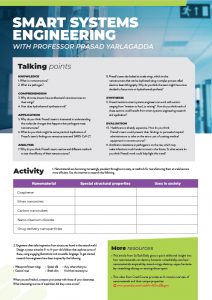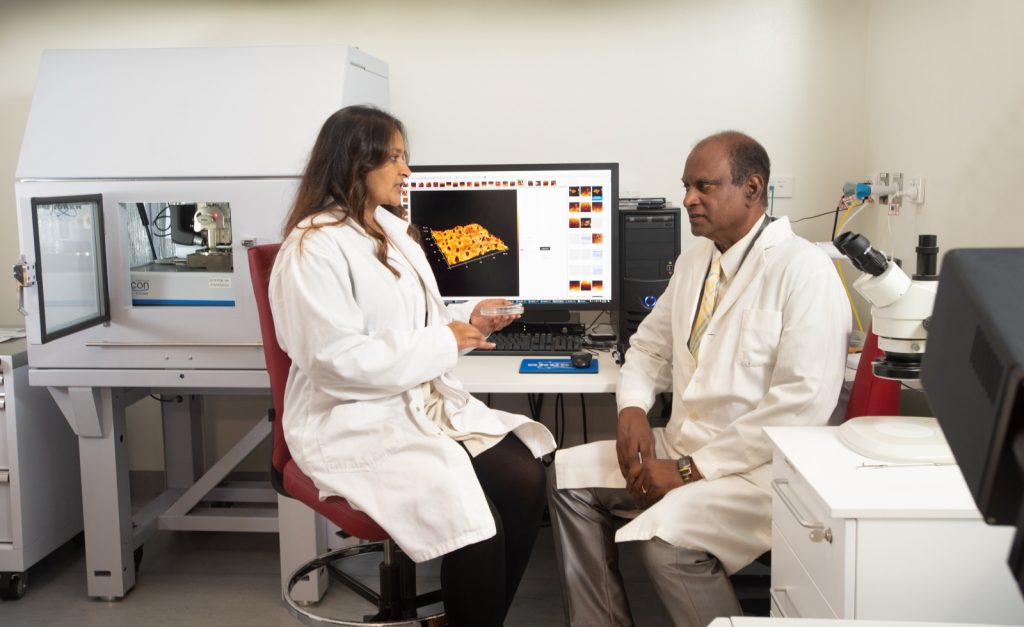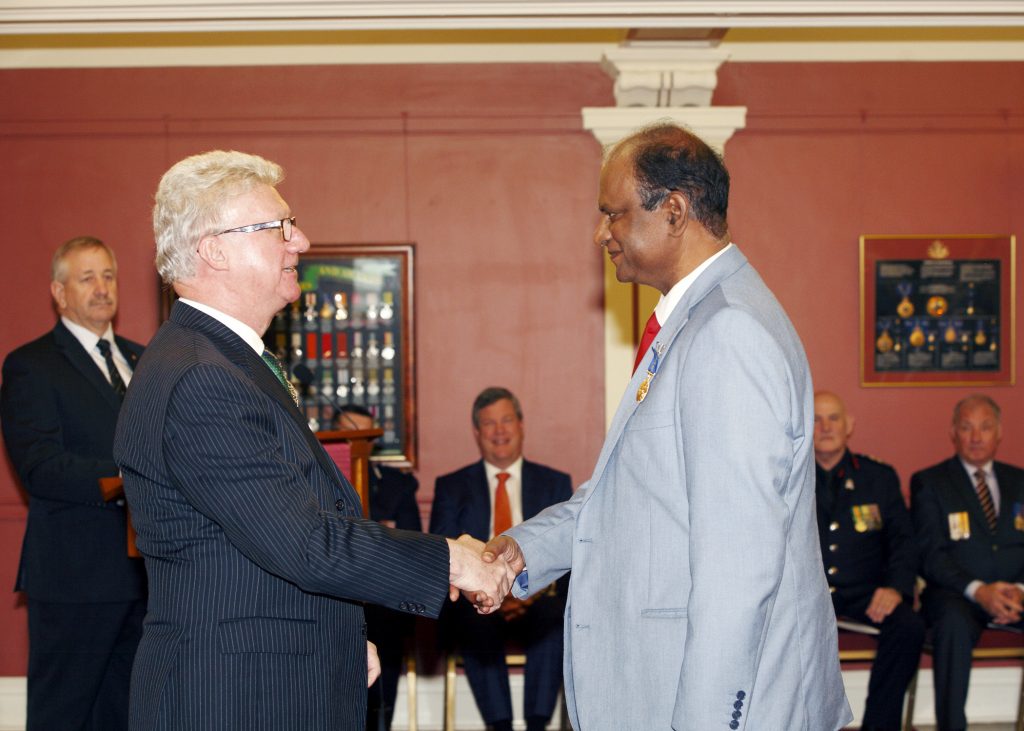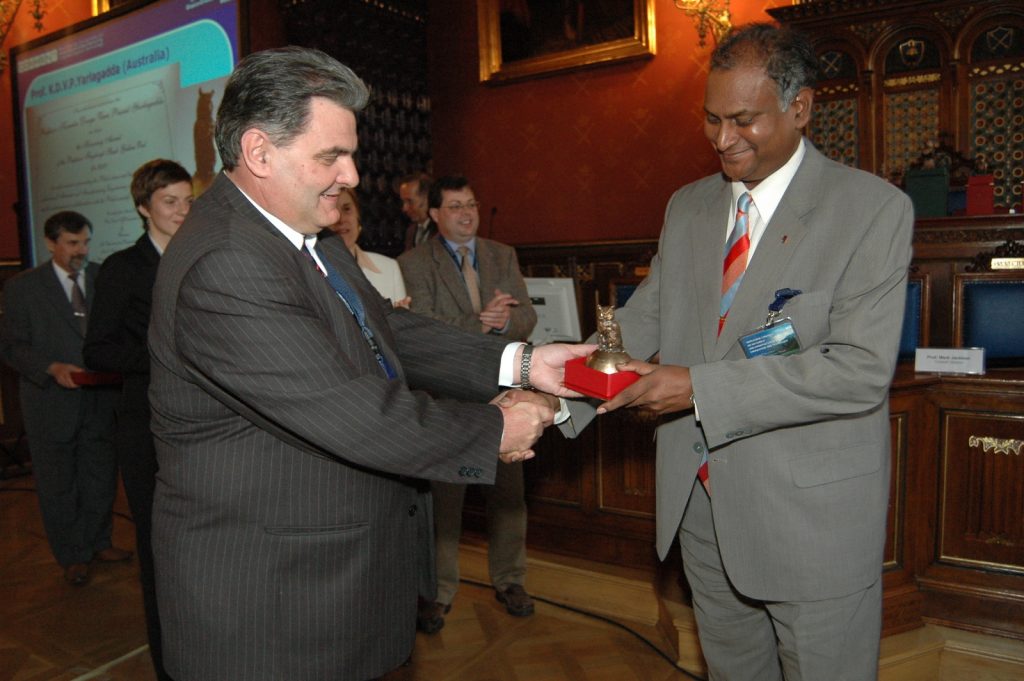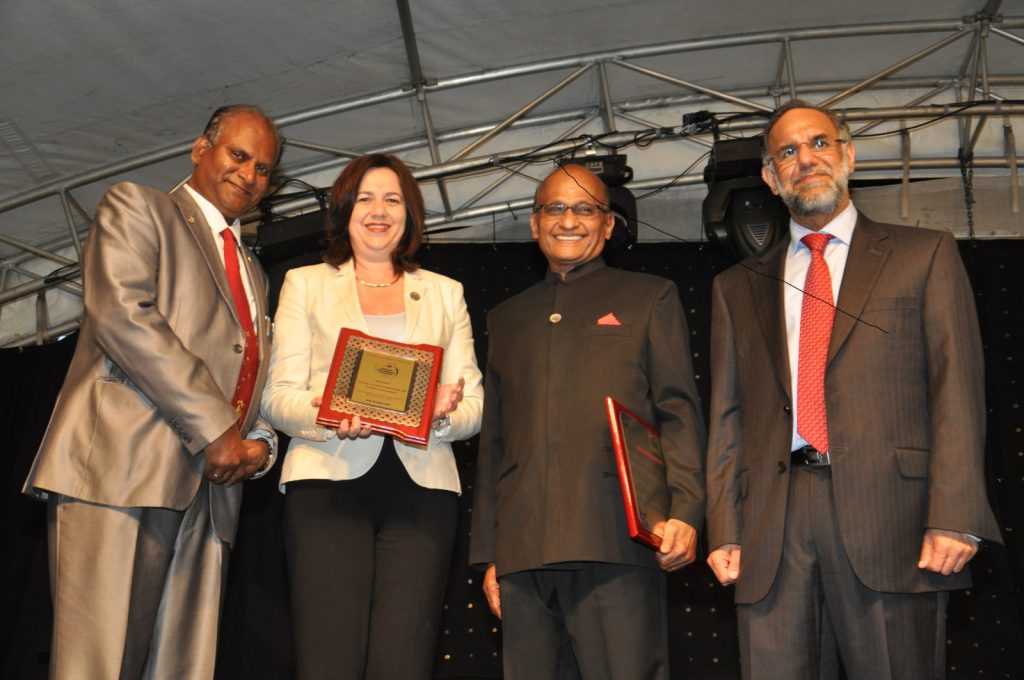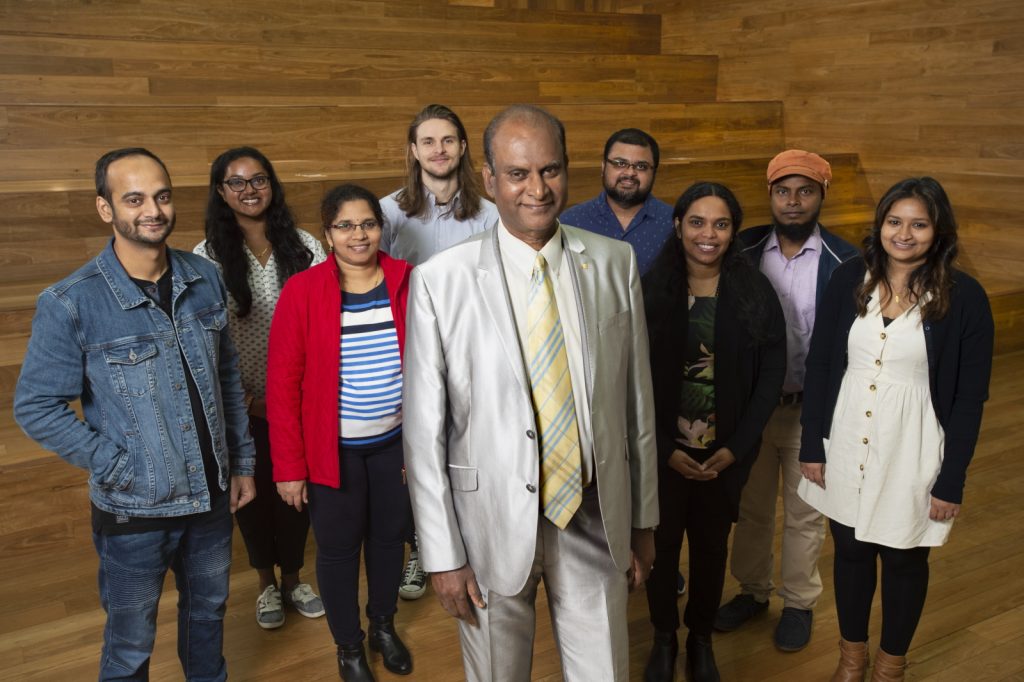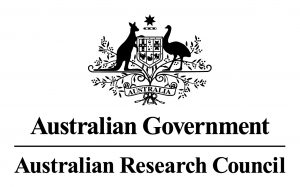Pathogen-busting nanosurfaces inspired by insect wings
Keeping surfaces clean is more complex than you might expect. Pathogens can adhere to and multiply on almost any surface – but not all. Professor Prasad Yarlagadda, from the Queensland University of Technology in Australia, is taking inspiration from insect wings to design nanosurfaces that destroy any bacteria or viruses that land on them. This has major implications for the next generation of super-sterile materials, especially within the medical field.
TALK LIKE A…
SMART SYSTEMS ENGINEER
Bacteria — single-celled microorganisms typically about a tenth of the size of our own cells, some of which are pathogens (can cause disease)
Biofilm — a community of bacteria or other microbes, held to a surface by a thin layer of viscous material that they secrete
Colony forming unit — a unit used in research to estimate the number of microbial cells in a sample that are able to go on to multiply into a colony
Fluorescence — the ability of a chemical to absorb a certain radiation and retransmit it as visible light
Nano — a prefix used for many terms (e.g. nanomaterial, nanoparticle, nanostructure) to indicate the substance exists at the nano scale – in other words, the substance itself or its key features are very, very small
Orthopaedic — the branch of medicine that addresses issues with bones or muscles
Pathogen — a bacteria, virus, or other microbe that causes disease
Virus — an infective agent, many times smaller than bacteria, that multiplies only within infected cells, and can be pathogenic
Infectious diseases are one of the main causes of death worldwide. Tuberculosis, for instance, killed around 1.6 million people in 2021, while the recent COVID-19 pandemic highlighted the deep societal impacts of a highly infectious virus. Finding ways to treat these diseases is paramount, but finding ways to stop diseases spreading in the first place has the potential for even greater societal benefits. Lots of pathogens multiply or spread via surfaces – so by making critical surfaces hostile to pathogens, rates of infection can potentially be mitigated. This has significant implications for healthcare and hospital environments, and other crowded places such as transport and infrastructure hubs.
Take orthopaedic implants – hip or knee replacements, screws and plates to support damaged bones, and so on. While orthopaedic procedures bring great benefits to most patients, they also entail risks. “Orthopaedic implants are susceptible to a range of different types of infection,” says Professor Prasad Yarlagadda, of the Queensland University of Technology. Even with the most fastidious sterilisation techniques, there is a risk that surgical instruments or the implants themselves are hosts to colonies of bacteria, which are called ‘biofilms’ when they multiply on a surface. The tissues exposed by surgery can provide an easy infection site for such colonies, which can lead to serious health issues for the patient, with worst case scenarios resulting in amputation of the affected limb or even death.
Nanotextured structures
Prasad has long been interested in ways to design surfaces at the nano level that repel or even destroy pathogens. His team, the Smart Structures and Bio-Interface Group (SSBIG), focuses its research on pathogenic bacteria. “Some studies suggest that when bacteria cells come into contact with certain nano-structured surfaces, they rupture and die,” he says. SSBIG’s recent research has looked closer into this, finding that nanostructures involving a series of pointy ‘nanospikes’ can provide pressure points on the cell walls of bacterial cells that come into contact with it. It is not dissimilar to rolling a water balloon across a floor covered in barbed wire, albeit on a much, much smaller scale. Bacteria are so tiny themselves, that it requires even tinier structures to burst them.
Coating orthopaedic implants with such nanostructured surfaces could help make them far less likely to pose an infection risk. “Such antibacterial surfaces prevent the initial attachment of bacteria and have the potential to restrict biofilm formation and associated implant infection,” says Prasad. His team is focused on practical applications, always thinking about how its findings can bring benefits to society.
Insect inspiration
While anti-pathogenic surfaces are a modern and innovative area of research for humans, as is often the case, the natural world got there first. Dragonflies and cicadas have naturally antibacterial wings, helping them to avoid infections on these fragile but essential surfaces. Researchers used powerful microscopes to examine these properties and found that the wings are covered in nanospikes. These findings have gone on to inspire Prasad’s team, which is imitating this structure in its own research.
SSBIG employs a method called hydrothermal synthesis, which is widely used for nanofabrication due to its reliability, efficiency, environmentally friendly nature and capacity for fine control. “This method involves high temperatures and pressures to dissolve and recrystallise materials to form nanoparticles,” explains Prasad. “Adjusting the conditions of these reactions, such as the temperature, the concentrations of dissolved materials used, or the duration of the reaction, alters the shape, size and roughness of the nanoparticles formed.” Prasad’s team has used this method to create nanostructures that mimic those found on dragonfly wings, with similar antibacterial properties.
Findings
Reference
https://doi.org/10.33424/FUTURUM333
Once the nanostructures are created, the next step is to test their effectiveness. “We tested the effects of our nanostructured surfaces on two common bacterial species, both of which are highly pathogenic and problematic for society, using two main methods,” says Prasad. The first involved counting colony forming units (CFUs), by incubating bacterial cells on different surfaces (including nanostructures), and then growing survivors on nutrients and counting the number of colonies that resulted. The second method involved staining bacteria with fluorescent dyes that change colour depending on whether the bacteria is alive or dead, and then assessing the coverage of live and dead cells on different surfaces after a set period of time. “Additionally, we also used scanning electron microscopy to directly see how bacterial cells were behaving and being affected by different surfaces,” says Prasad.
“Our research indicated that nanostructured surfaces can rupture bacterial cells of different species, and work just as well when these nanostructures are present on flat or non-flat surfaces,” Prasad explains. “We also found that introducing fluid flow over the surface led to even better performance, with the flow removing live bacteria from nanostructured surfaces because they were not able to easily adhere.” These findings are very promising, indicating significant practical bonuses to including nanostructures on key surfaces.
From bacteria to viruses
Viruses are even smaller than bacteria, yet a number of viruses are devastating pathogens, as the recent COVID-19 pandemic indicated. Prasad and his team have been on the frontline of developing solutions to viral spread. This work was supported by virologist Professor Kirsten Span and PhD student Miss Tejasri Yarlagadda of the School of Biomedical Sciences at the Queensland University of Technology. They contributed various activities around developing protocols and training Prasad’s postdoctoral reserchers Dr Amar Velic and Dr Alka Jaggessar to undertake anti-viral studies. “We began studying the antiviral properties of nanostructure surfaces against respiratory viruses in mid-2019, before the pandemic,” he says. “We eventually submitted a publication just three days after the pandemic was declared worldwide.”
The publication showed that nanostructured aluminium could significantly reduce the viability of certain viruses compared to untreated aluminium. “Soon after, we further tested the nanostructured aluminium against SARS-CoV-2 (the virus responsible for COVID-19) and found a dramatic reduction after six hours, with almost all viral particles being eliminated,” explains Prasad. “We also began developing these surfaces for other materials such as titanium, aluminium, stainless steel and certain polymers, given the usage of these materials in the medical field.”
Next steps
While such surfaces have potential practical applications across a wide range of industries, the first on the list is the medical sector. “The primary application of these surfaces would be on biomedical equipment,” says Prasad. “However, their application is not limited to this – in fact, in theory they could be added to any surface found in a hospital that is prone to bacterial colonisation.”
While SSBIG’s research has robustly demonstrated the effectiveness of nanostructured surfaces against pathogens, there remain unanswered questions it is keen to address. “Firstly, we are interested in understanding how nanostructured surfaces repel or destroy pathogens at the molecular level,” says Prasad. “To investigate this, we’ll conduct large molecular simulations (using multi-scale molecular dynamic modelling at cell level) of pathogen interactions with nanostructured surfaces, alongside analysing molecular responses themselves via changes in protein and lipid compositions.”
The team’s second aim is further translation of their findings into practical applications for the real world. “We’ll continue to develop nanostructures that can be applied to an ever-expanding range of relevant materials,” says Prasad. “We will also investigate ways to improve the stability and durability of nanostructured surfaces, and to further study their behaviour under complex flow conditions.”
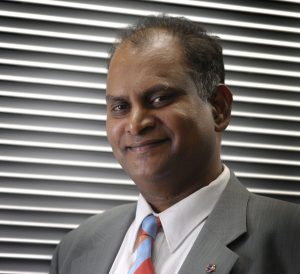 PROFESSOR PRASAD YARLAGADDA
PROFESSOR PRASAD YARLAGADDA
Faculty of Engineering, Queensland University of Technology, Australia
Field of research: Smart Systems Engineering (majoring in Bio-Manufacturing)
Research project: Developing nanostructured surfaces that repel or destroy pathogens
Funders: Australian Research Council (ARC), Metro North Hospitals, Princess Alexandra Hospital, Queensland Children Hospital, Australia India Strategic Research Funds, Stryker, Advanced Queensland Industry Research Fellowship Scheme
ABOUT SMART SYSTEMS ENGINEERING
Smart systems engineering involves the integration of all engineering disciplines to science, health and medicine. Prasad talks more about the field and his own career path within it.
“Smart systems engineering crosses over disciplinary boundaries. People from engineering backgrounds can solve real-life problems by working alongside health professionals, medical researchers and mathematical modellers, to name a few. Any sector, ranging from aviation to food, to mining, has a need for integrated, cross-disciplinary work.
“It’s very difficult to become bored with a career in smart systems engineering. New opportunities will always arise, which can transform the world. For instance, the rise of computing over the last few decades has changed every aspect of our lives. In the future, the integration of smart systems will do the same.
“Around 18 years ago, when I became full professor, our university was looking to encourage more applied research by integrating different disciplines. I became the Founding Director of the Smart Systems Research Theme, which has since run many flagship projects focused on ideas such as future airport design, digital manufacturing and design of medical devices. It was clear that the development of products or support of a sector was not possible with the involvement of professionals from only a single discipline.”
Explore careers in smart systems engineering
• The Queensland University of Technology, where Prasad is based, promotes STEM careers through engagement with high schools, including on-campus workshops and events for high school students.
• Engineers Australia has a wide range of resources for teachers and students, including engaging learning materials, careers advice and national competitions.
• Future Makers hosts a substantial bank of links to STEM resources for Australian students, ranging from science events, education kits and career programmes.
• According to Indeed, the average annual salary for an engineer in Australia is AUS$53,000. Prasad says, “In the current post-COVID market, average salaries are increasing substantially.”
Pathway from school to smart systems engineering
At school and post-16, Prasad recommends mathematics as essential for most STEM degrees. Additionally, he says that subjects focused on science, technology, engineering, computing and medicine will all help set the stage for a career in engineering.
He also suggests finding out about study opportunities in smart systems engineering disciplines at the University of Southern Queensland.
Meet Prasad
Despite underprivileged beginnings, Professor Prasad Yarlagadda has had an illustrious career, focusing on research that improves the quality of life for many. This includes the development of innovative medical devices and anti-pathogenic surfaces, as well as an array of community-led development projects. He has worked with non-government organisations
(NGOs) to enhance the mobility of landmine victims in Cambodia and Vietnam, led community efforts for Queensland multicultural organisations, and shown leadership of international professional organisations too. Cumulatively, these achievements led Prasad to be awarded the prestigious Order of Australia Medal. Prasad explains more about his life and achievements.
“I was the first person in my family to enter middle school. As both my parents were illiterate due to economic conditions preventing their education, I did not get much educational guidance during my early years. Despite their financial hardship, my parents always encouraged my desire to learn. I am always grateful to them for supporting my education, which has not only changed my life but has paved the way for my younger family members too.
“Even as a child, I have always wanted to be an engineer. I enjoyed mathematics and physics at school, and my teachers encouraged me to learn more about engineering. My physics teacher, Tummala Seshagiri Rao, and my classmate’s father, G.Rama Krishna Raju (who is an engineer), were my first and most influential mentors.
“Once I completed my undergraduate studies in mechanical engineering, I worked for a year to understand more about the practical applications of engineering. My academic career has frequently been paused while I have worked for a couple of years in industry, which has helped me better appreciate real-world problems and develop my own problem-solving skills.
“Always being willing to collaborate and respect and acknowledge other contributions has greatly helped my career. Similarly, mentoring and nurturing young colleagues gives me a lot of satisfaction, with several of my students going on to very prestigious positions in Australia, India and around the world.
“There is no single solution to overcoming challenges in the workplace. However, having a positive and collaborative attitude has always helped me overcome both professional and personal obstacles.
“Beginning my undergraduate studies was one of my proudest career achievements. Similarly, completing my PhD, becoming a full professor and receiving a number of fellowships and awards have been proud moments for me. The most notable award is the Order of Australia Model, which recognises my accomplishments in both engineering education and support of the Queensland community. I also received the Researcher of the Year award following my efforts to prevent the spread of COVID-19 in hospitals and other facilities.”
From his own experiences, Prasad knows how education can change an individual’s life and their family’s well-being. With his interest in the development of rural areas and providing educational opportunities to regional residents, he has recently accepted a new role as Dean (of Engineering) at the University of Southern Queensland (UniSQ), Australia. Commencing in February 2023, his new role will see him working to improve educational and employment opportunities in South-East Queensland regional areas such as Toowoomba, Ipswich and Springfield.
Prasad’s top tips
1. Follow your passion. Don’t be swayed by pressure from peers, family or society. If you choose something you care about, you will have a fulfilling career.
2. Work beyond any one discipline, and appreciate the benefit of integration with other disciplines. This is the best way to find work that benefits both you and the society you live in.
Do you have a question for Prasad?
Write it in the comments box below and Prasad will get back to you. (Remember, researchers are very busy people, so you may have to wait a few days.)


